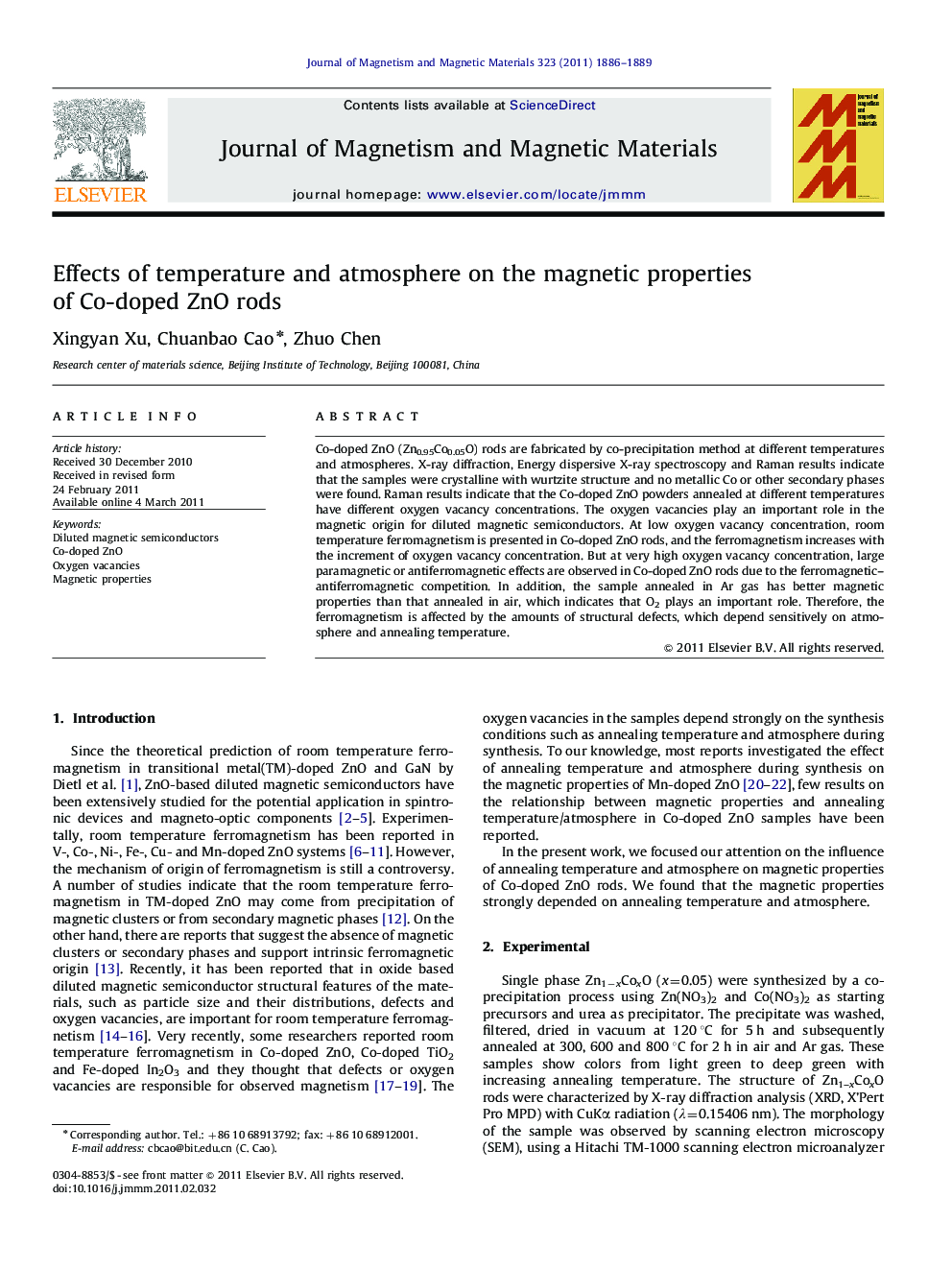| Article ID | Journal | Published Year | Pages | File Type |
|---|---|---|---|---|
| 1800556 | Journal of Magnetism and Magnetic Materials | 2011 | 4 Pages |
Co-doped ZnO (Zn0.95Co0.05O) rods are fabricated by co-precipitation method at different temperatures and atmospheres. X-ray diffraction, Energy dispersive X-ray spectroscopy and Raman results indicate that the samples were crystalline with wurtzite structure and no metallic Co or other secondary phases were found. Raman results indicate that the Co-doped ZnO powders annealed at different temperatures have different oxygen vacancy concentrations. The oxygen vacancies play an important role in the magnetic origin for diluted magnetic semiconductors. At low oxygen vacancy concentration, room temperature ferromagnetism is presented in Co-doped ZnO rods, and the ferromagnetism increases with the increment of oxygen vacancy concentration. But at very high oxygen vacancy concentration, large paramagnetic or antiferromagnetic effects are observed in Co-doped ZnO rods due to the ferromagnetic–antiferromagnetic competition. In addition, the sample annealed in Ar gas has better magnetic properties than that annealed in air, which indicates that O2 plays an important role. Therefore, the ferromagnetism is affected by the amounts of structural defects, which depend sensitively on atmosphere and annealing temperature.
► The single phase Zn1−xCoxO (x=0.05) rods were fabricated by co-precipitation method. ► Oxygen vacancy concentration is relevant to annealing temperature and atmosphere. ► Oxygen vacancy concentration has an effect on the ferromagnetism of the samples. ► Oxygen vacancies is responsible for the room temperature ferromagnetism in the Zn1−xCoxO rods.
